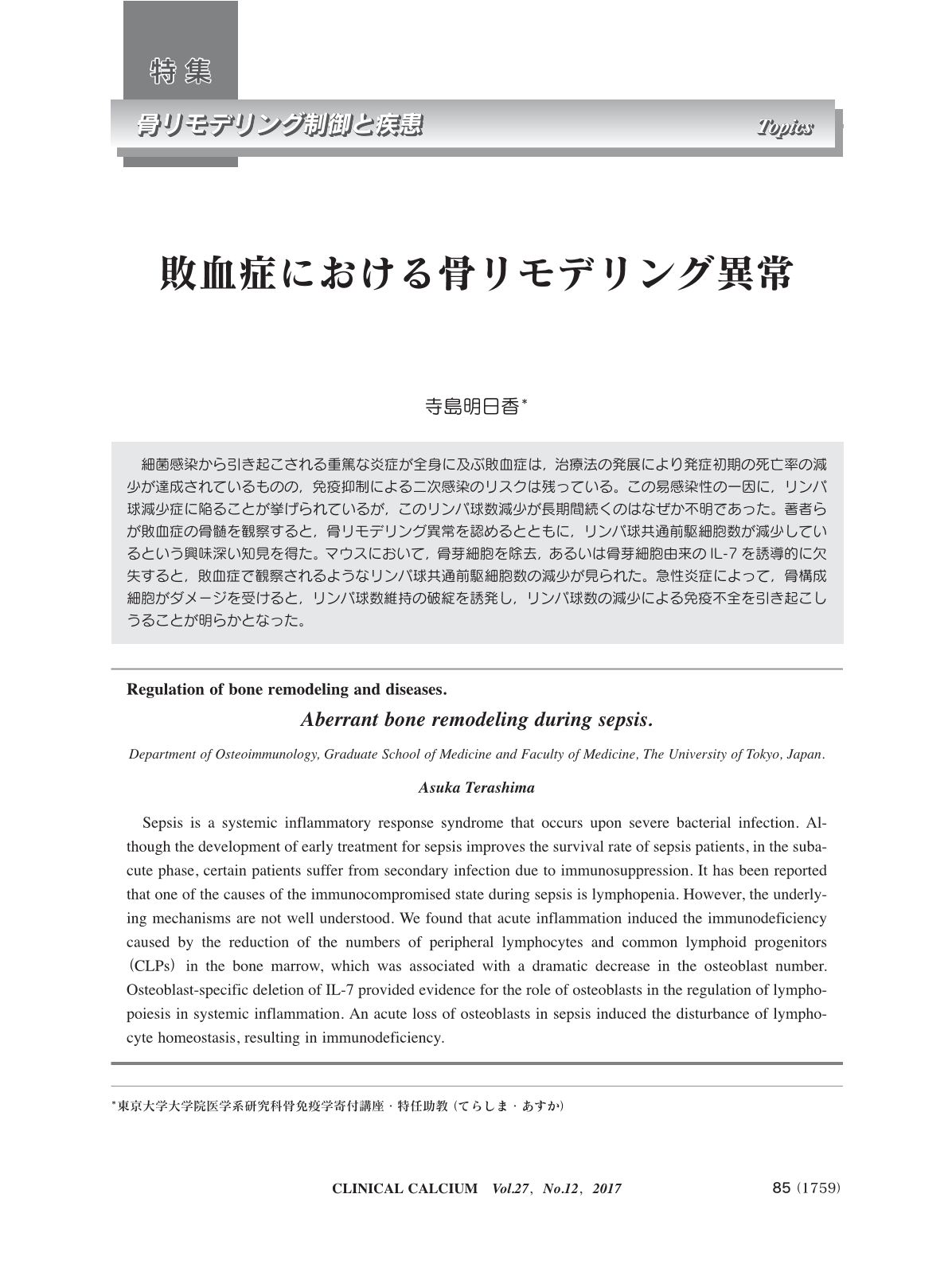Japanese
English
- 有料閲覧
- Abstract 文献概要
- 1ページ目 Look Inside
- 参考文献 Reference
細菌感染から引き起こされる重篤な炎症が全身に及ぶ敗血症は,治療法の発展により発症初期の死亡率の減少が達成されているものの,免疫抑制による二次感染のリスクは残っている。この易感染性の一因に,リンパ球減少症に陥ることが挙げられているが,このリンパ球数減少が長期間続くのはなぜか不明であった。著者らが敗血症の骨髄を観察すると,骨リモデリング異常を認めるとともに,リンパ球共通前駆細胞数が減少しているという興味深い知見を得た。マウスにおいて,骨芽細胞を除去,あるいは骨芽細胞由来のIL-7を誘導的に欠失すると,敗血症で観察されるようなリンパ球共通前駆細胞数の減少が見られた。急性炎症によって,骨構成細胞がダメージを受けると,リンパ球数維持の破綻を誘発し,リンパ球数の減少による免疫不全を引き起こしうることが明らかとなった。
Sepsis is a systemic inflammatory response syndrome that occurs upon severe bacterial infection. Although the development of early treatment for sepsis improves the survival rate of sepsis patients, in the subacute phase, certain patients suffer from secondary infection due to immunosuppression. It has been reported that one of the causes of the immunocompromised state during sepsis is lymphopenia. However, the underlying mechanisms are not well understood. We found that acute inflammation induced the immunodeficiency caused by the reduction of the numbers of peripheral lymphocytes and common lymphoid progenitors(CLPs)in the bone marrow, which was associated with a dramatic decrease in the osteoblast number. Osteoblast-specific deletion of IL-7 provided evidence for the role of osteoblasts in the regulation of lymphopoiesis in systemic inflammation. An acute loss of osteoblasts in sepsis induced the disturbance of lymphocyte homeostasis, resulting in immunodeficiency.



